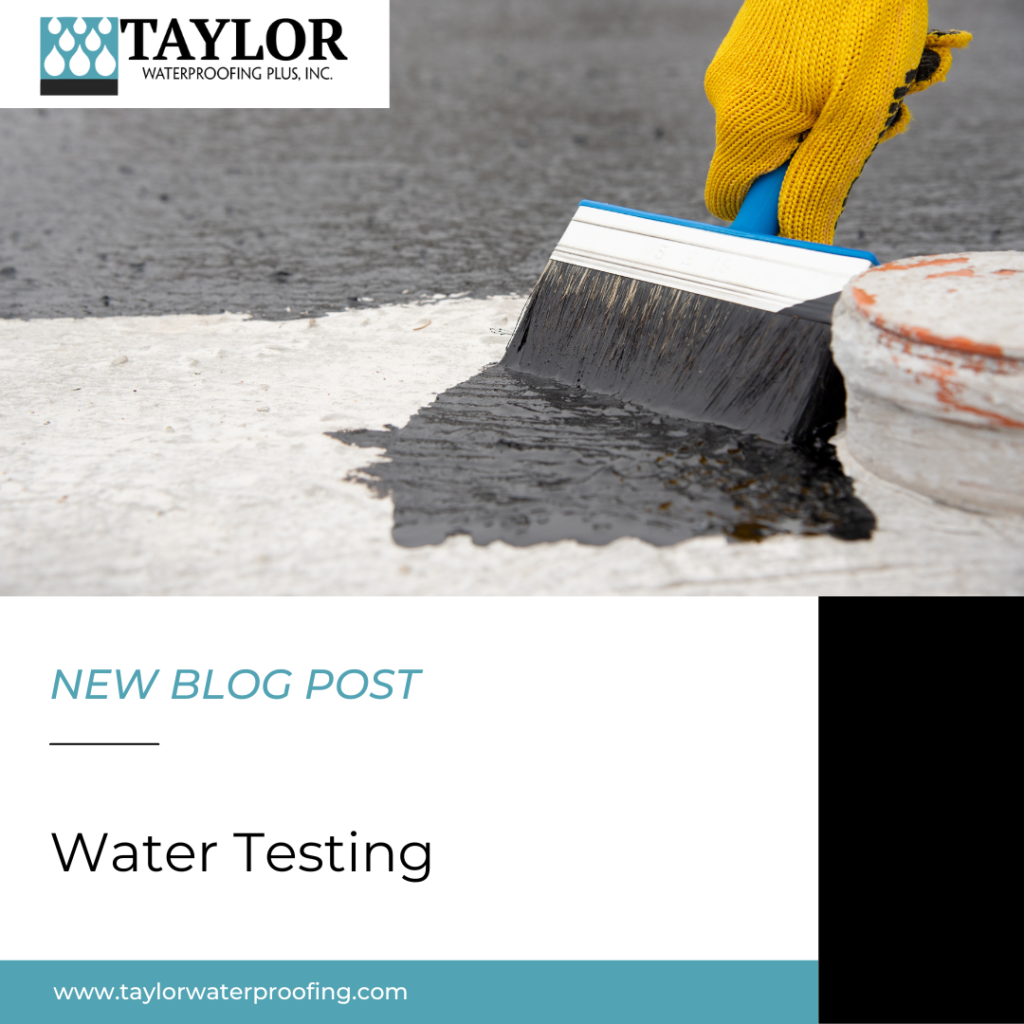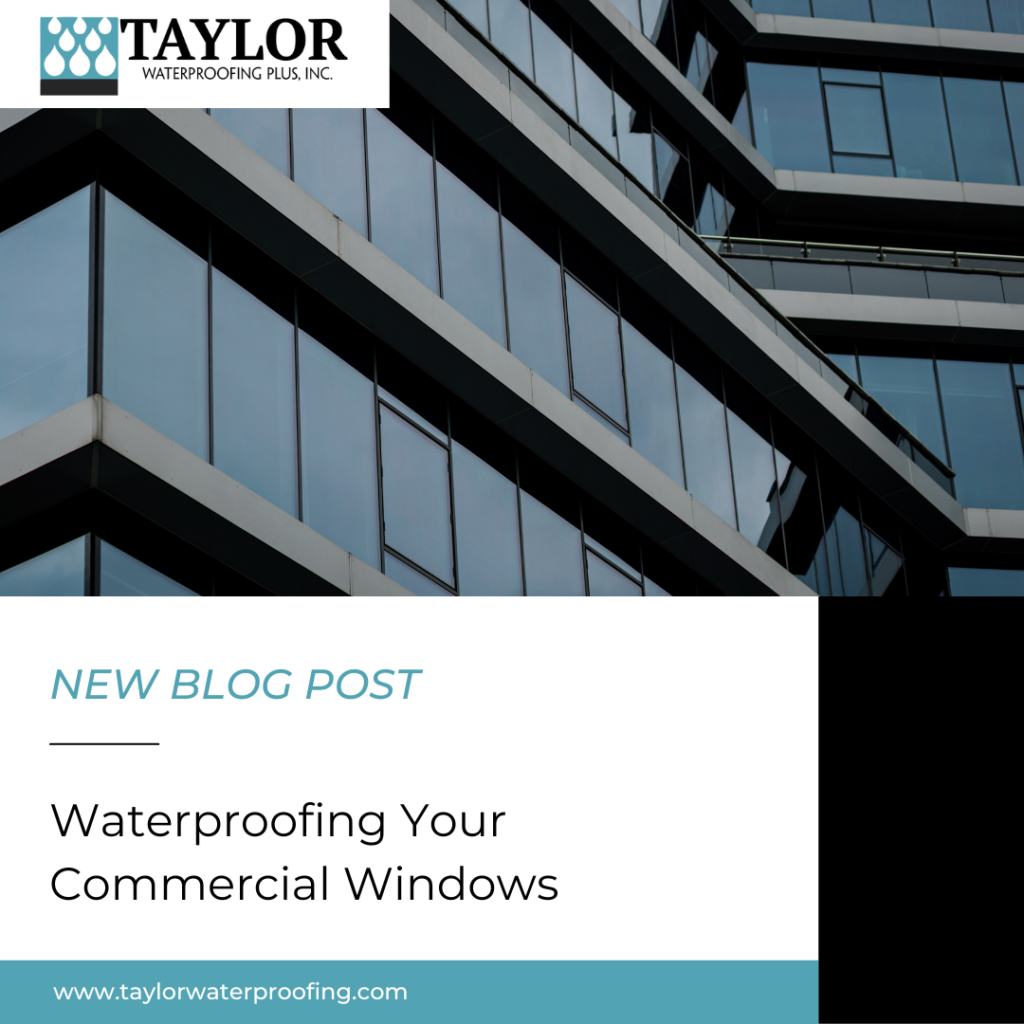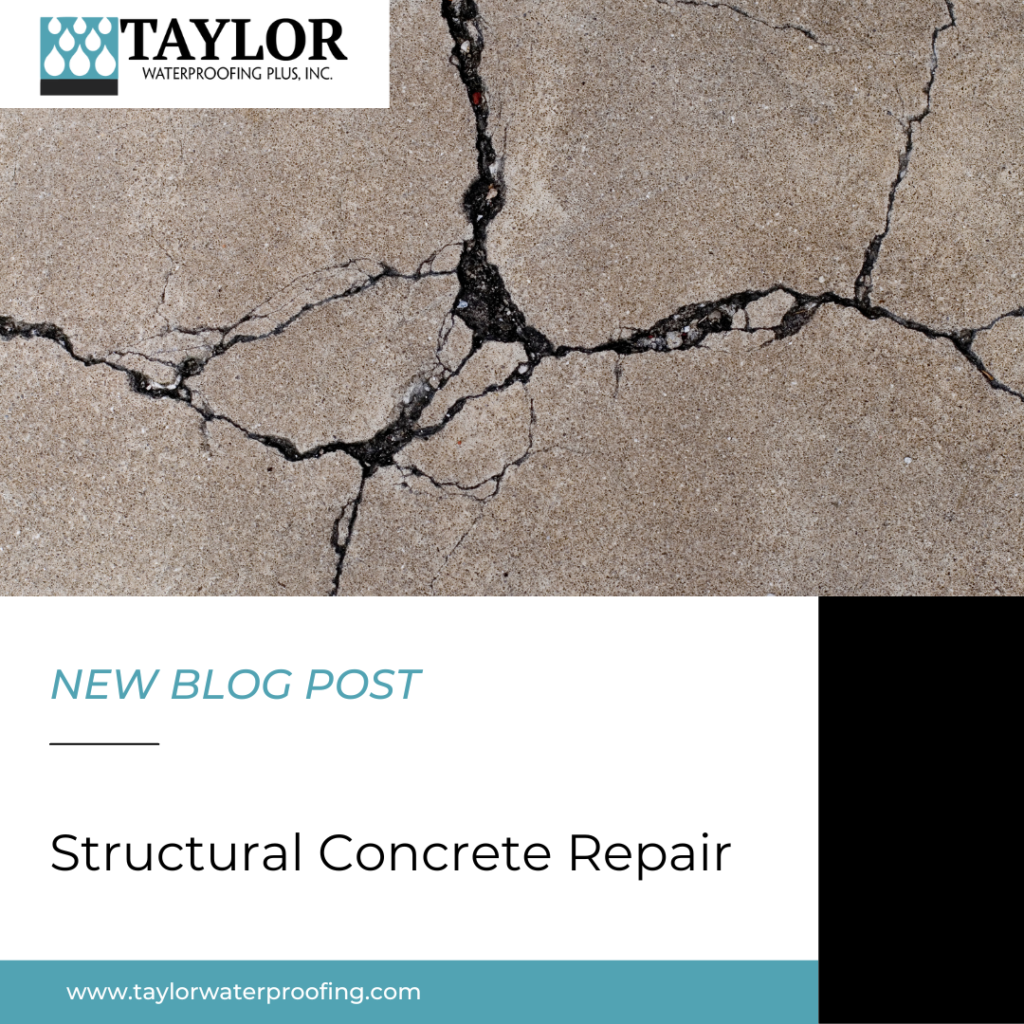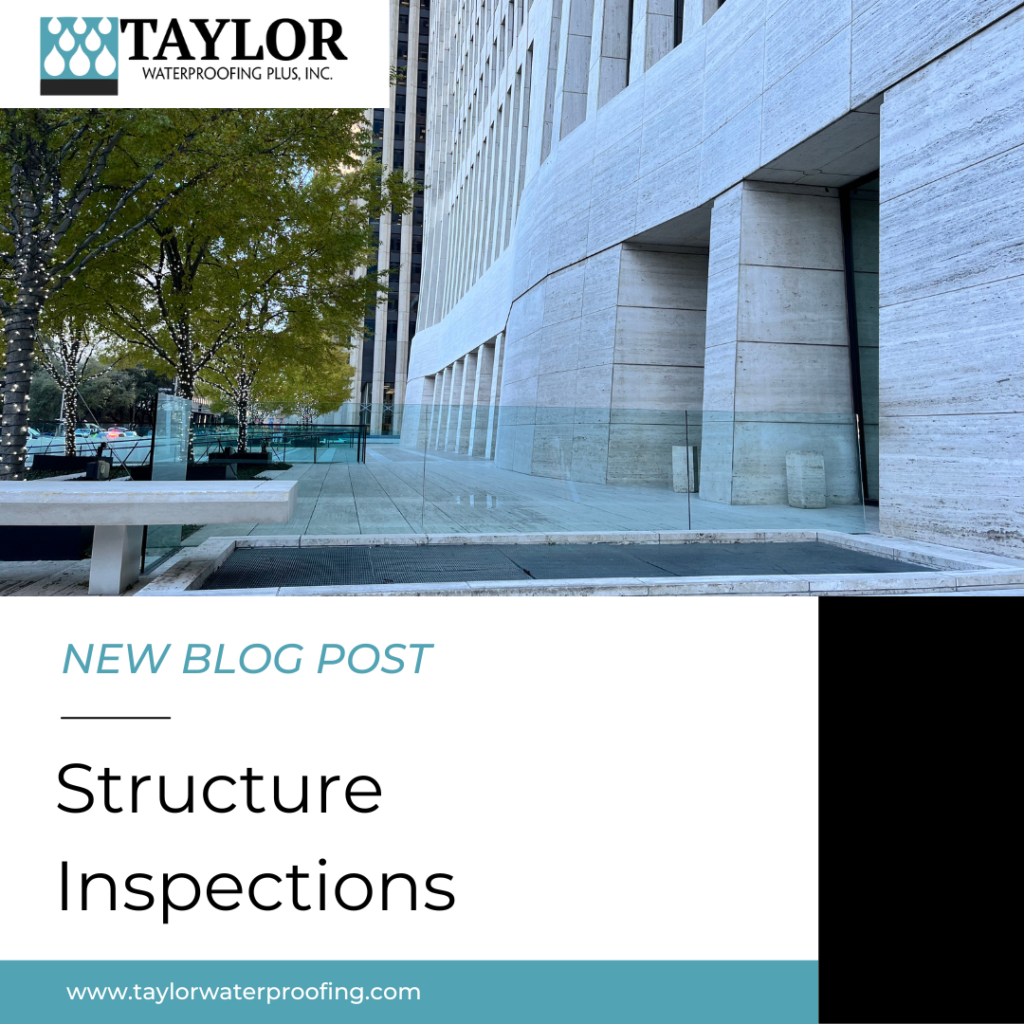
Water Testing
Waterproofing is an essential service that companies need to consider to prevent water damage to commercial buildings. One of the ways to determine if a building requires waterproofing is by conducting water testing for leaks. Water testing is used to identify areas of the building that are vulnerable to water infiltration.
Water Testing for Commercial Buildings
The first step in water testing is to conduct a visual inspection of the building’s exterior and interior. This inspection will identify any visible signs of water damage, such as water stains, mold growth, or peeling paint. The inspector will also look for any cracks, gaps, or holes in the building’s structure that may allow water to seep in.
Once the visual inspection is complete, the inspector will conduct a water spray test using a water bar. This test involves spraying water onto the building’s exterior walls using a regulated pressure hose to replicate rain. The inspector will observe the walls for any signs of water infiltration, such as water seeping through cracks or gaps.
After the water testing is complete, one of our team members will provide a detailed report of the findings and the recommended next steps.
Waterproofing Services
Once we have water-tested your building, we may recommend waterproofing services, sealants, or coatings.
- Below-Grade Waterproofing: Many times this is done while the building is being constructed, but a sealant barrier can be applied to the interior of the building to protect the basement and foundation. This is also called Negative-Side Waterproofing.
- Chemical Grout Injections: These repair and seal your foundation and stop water from infiltrating the building.
- Commercial Window and Wet Glazing: There are a few options for waterproofing commercial windows. Our team will give a recommendation on the type of sealant you need. Learn more here.
- Sealant Replacement: Over time, sealant can wear down for various different reasons. If you have had a waterproofing service with sealant in the past but think that it needs to be redone or replaced, our team can inspect the area.
Water testing is an important step in determining if a commercial building requires waterproofing services. By identifying areas of the building that are vulnerable to water infiltration, we can help you take proactive measures to prevent water damage and protect your investments. Contact us here to learn more.

Waterproofing Your Commercial Windows
By waterproofing your commercial windows, you can protect your building from water damage. There are several ways Taylor Waterproofing can make sure your windows are good to go, depending on your building’s needs.
Sealing The Perimeter
One effective method is wet glazing. This involves using a sealant to attach the glass directly to the frame without the need for a gasket. Wet glazing creates a stronger bond and better seal against water intrusion. Before applying the sealant, our team will clean and dry the window surfaces thoroughly. Then, apply the sealant in a continuous bead along the joint or seam, making sure it’s evenly applied. We use a high-quality sealant that is compatible with your windows and can withstand weather and temperature changes. Our team will make a recommendation of what sealant is best for your needs.
Expansion Joints
Another important aspect of waterproofing commercial windows is addressing the expansion joints on the surface of the walls. Expansion joints allow for movement in the building due to temperature changes or settling. However, if not properly waterproofed, they can become a source of water intrusion. Our team will use a flexible silicone-based sealant for this application.
Risks of Not Waterproofing
Waterproofing commercial windows is an important step in maintaining the integrity of a building’s structure. Without proper waterproofing, water can seep into the building through the windows, causing damage to the frame, walls, and interior and over time can cause mold growth.
Regular maintenance and inspection can also help identify any areas that need resealing to ensure long-lasting waterproofing. When waterproofing, it’s important to choose the right method and materials for your specific windows and building type. Our team can assess your windows and create a plan to waterproof your commercial building and windows. Reach out to one of our team members here to learn more about how we can ensure your windows are protected from the elements.

Waterproofing Your Building’s Foundation
Waterproofing your building’s foundation is essential to prevent water damage and structural issues. Water can penetrate the foundation in many ways, such as through cracks, joints, and porous materials. This can lead to problems like mold growth, musty odors, and weakened supports and compromise the structural integrity of your building. Luckily, there are several ways to waterproof your foundation.
The first step if your commercial building has issues with water penetrating the foundation or leaks, is to find where the water is coming from and the cause. Our team can inspect your building’s structure and concrete to identify the issues and develop a plan for repairs and maintenance.
The first step is to ensure drainage sloped away from the structure. This allows water to be diverted away from the foundation before it can cause damage. Second, sealing any cracks or joints in the foundation can also help prevent water from entering. This can be done using a variety of materials, such as urethane or silicone sealant. It’s important to address any cracks or gaps as soon as possible, as they can quickly worsen over time.
Below-Grade Waterproofing – This process is often done during the construction of the building by applying a waterproof barrier to the foundation walls and slab of a building to prevent water penetration and damage. This is essential in areas with high water tables, heavy rainfall, or flooding risks. It provides a protective layer that keeps water from seeping through the foundation and damaging the structure.
Negative-Side Waterproofing – This is a type of below-grade waterproofing that is done on the inside of the building if the external side cannot be reached.
Overall, waterproofing your building’s foundation is crucial for protecting your property and ensuring its longevity. By taking preventative measures and addressing any issues promptly, you can avoid costly repairs and maintain a safe and comfortable space for you and your building occupants. To learn more about waterproofing your commercial building’s foundation, reach out to one of our team members here.

Structural Concrete Repair
Structural concrete repair is an essential maintenance activity for commercial buildings. Over time, concrete structures can become damaged due to various reasons, such as weathering, corrosion, and structural overloading. If left unattended, these damages can compromise the safety and integrity of the building. Here are some key points to consider when it comes to structural concrete repair in commercial buildings:
Inspection – A thorough inspection of the concrete structure is essential to identify any damage or deterioration. This may involve visual inspection and testing.
Repair Techniques – The repair technique used will depend on the nature and extent of the damage. Common repair techniques include chemical grout injections, patching, and overlay. Our team will assess your building and concrete and develop a plan for your building’s repairs.
Waterproofing – Waterproofing is an essential part of concrete repair, especially for areas that are prone to water infiltration. This is achieved by applying coatings, sealants, or membranes.
Maintenance – Regular maintenance is crucial to ensure the longevity of the repair. This may involve cleaning, inspection, and repair of any damage that may occur over time.
Damages to Buildings’ Concrete:
Cracks – These damages can be caused by a variety of factors such as temperature changes, moisture, and structural movement, and can lead to leaks in your building.
Spalling and Scaling – This occurs when the surface layer of concrete flakes or peels.
Corrosion – When the reinforcing steel inside the concrete begins to rust, it causes the concrete to crack and deteriorate.
Addressing structural concrete damage is important for preventing further deterioration and potential safety hazards, including tripping hazards, compromise the structural integrity of a building, or structural failure. There are many techniques and materials that can be used to repair your building’s concrete. Our team can help prepare a plan for repairing and preventing damage to your building’s structural concrete. Reach out to our team through our website here to learn more.

Commercial Brick and Masonry Surface Repairs
Commercial brick repair is an important aspect of maintaining the appearance and structural integrity of a building. Over time, brick can become damaged due to weather, wear and tear, or even vandalism. It’s important to address these issues promptly to prevent further damage and ensure the safety of the building’s occupants.
Cracking – Cracks can occur due to a variety of reasons, including settling of the foundation, water damage, or even the use of improper materials during construction. If left untreated, these cracks can lead to further damage and potentially compromise the structure of the building.
Efflorescence – This is a white, powdery substance that appears on the surface of the brick. It’s caused by water seeping into the brick and carrying minerals to the surface. While efflorescence itself isn’t harmful to the brick, it can be unsightly and detract from the overall appearance of the building.
Spalling – This is when the surface of the brick flakes off, usually due to moisture damage. Spalling can weaken the brick and also compromise the aesthetic appeal of the building.
Discoloration – Bricks can become discolored due to exposure to sunlight or other environmental factors.
Corrosion – The metal components of brick structures, such as ties or lintels, can corrode over time and cause structural issues. Corrosion can weaken the brick and also lead to water infiltration.
Leaks – Water can seep through the mortar joints and cause damage to the bricks. This can lead to the deterioration of the brick and can also cause damage to interior spaces.
If you are having these and other issues with the brick on your commercial building, we can help. Our team has the expertise and equipment necessary to assess the damage and recommend the best course of action. For example, if the issue is simply cosmetic, we may recommend a cleaning or sealing treatment. If the damage is more severe, we may need to replace individual bricks or even sections of the wall.
Ultimately, it’s important to address any issues with commercial brick as soon as they arise. Not only will this help maintain the appearance of the building, but it will also ensure its safety and longevity. By working with Taylor Waterproofing, you can rest assured that your building is in good hands. Contact us today to discuss your commercial brick repair needs.

Chemical Grout Injections
Chemical grout injections are a versatile and effective solution for repairing and stabilizing commercial buildings. It is a specialized material that is injected into soil or concrete structures to improve their strength, stability, and durability. This technique has been used for many decades and has proven to be a reliable and cost-effective way to improve the condition of commercial buildings.
Uses of Chemical Grout Injections
Commercial Buildings and Foundation Repair – One of the primary applications of chemical grout injections is repairing foundation walls and slabs. These structures are often subject to soil movement, groundwater infiltration, and other forms of deterioration. Chemical grout can be used to fill voids, stabilize soil, and prevent further settlement or damage. It is also effective in sealing leaks and cracks in concrete structures, preventing water intrusion and other forms of damage.
Soil Stabilization and Erosion Control – Chemical grout injections can be used to stabilize slopes, prevent erosion, and improve the stability of embankments and other structures. This is particularly important in areas with high rainfall or unstable soil conditions, where erosion and landslides can pose a serious threat to commercial buildings and infrastructure.
Underground Structures – These structures are often subject to ground movement, water infiltration, and other forms of deterioration that can compromise their integrity. Chemical grout can be used to fill voids, stabilize soil, and prevent further damage, thus ensuring the safety and longevity of these structures.
Benefits
Water-Resistant Seal – These injections create a water-resistant seal around cracks and leaks in the foundation, preventing water from seeping into the building.
Cost-Effective – Chemical grout injections can be a cost-effective solution to repair foundation cracks and leaks, as they require minimal excavation and can be completed quickly.
Non-Invasive – This process requires minimal excavation and does not disrupt the building’s occupants.
Long-Lasting – The grout material is designed to withstand pressure and maintain its structural integrity over time.
Overall, chemical grout is a versatile and effective solution for improving the condition and safety of commercial buildings. Whether it is used for foundation repair, stabilization of underground structures, or erosion control, chemical grout injections offer a reliable and cost-effective way to ensure the longevity and safety of commercial buildings. If you are a commercial building owner or operator, consider using chemical grout to improve the condition and stability of your structure. Contact us today to talk to one of our waterproofing experts about your building’s needs.

Sandblasting VS. Waterblasting – Which is best for your building?
Sandblasting and waterblasting are two popular methods for surface preparation and cleaning. Sandblasting uses abrasive materials, such as sand, to remove surface contaminants and smooth out surfaces. Waterblasting, on the other hand, uses high-pressure water to blast away contaminants and dirt.
Both methods can be used for surface preparation. Making sure that your surface is clean will go a long way when applying paint or other treatments. Sandblasting and waterblasting can both remove paint, grime buildup, oil, rust, and other contaminants that may be on your building. Both are great ways to preserve your building.
They both involve high-pressure equipment that uses a nozzle to direct either sand or water at a surface, effectively removing unwanted substances. Despite using different abrasive materials, both methods can be effective in preparing surfaces for painting or other treatments. Additionally, both sandblasting and waterblasting should only be performed by trained professionals to ensure safety and proper application.
Waterblasting Benefits
Less Dust – In some areas, sandblasting is restricted because of the dust plumes and high populations. This technique cuts downs on the harmful dust that can happen when sandblasting.
More Versatile – Waterblasting has more versatile applications, while sandblasting is often used for specific applications.
Great Prep for Coating – Waterblasting leaves a lightly etched surface that is great prep if you’re planning to apply a coating to the area.
Sandblasting Benefits
More Effective – Sandblasting can be more effective than waterblasting for removing thick coatings or heavily rusted surfaces.
Faster – The water in waterblasting acts as a lubricant. Because sandblasting doesn’t have this, the work can get done faster, specifically if it is removing heavy coatings or sealants.
Great for Industrial – Sandblasting is often used in large-scale industrial projects, such as cleaning concrete or buildings.
Sandblasting Restrictions
Sandblasting can be more dangerous than waterblasting because dust clouds can form and be harmful if inhaled. Because of this, in highly populated areas, it can be a better option to waterblast. Some cities and states also require permits for sandblasting.
In conclusion, both waterblasting and sandblasting have their advantages and disadvantages when it comes to surface preparation and cleaning. While waterblasting may be a more environmentally friendly option, sandblasting may be more effective for tougher surfaces. Ultimately, the choice between the two methods will depend on the specific needs of the project and the desired outcome. It’s important to carefully consider the factors involved and make an informed decision to achieve the best results. Contact us to talk to one of our experts to see which option would be best for your project.

Structure Inspections
What happens during structural inspections?
Structural inspections are all about helping you understand the health of your building. The inspector will check the foundation and framework and look for damage that could be caused by structural issues. After the inspection is performed, the inspector will go over the results and the next steps on how to remedy the issues. The damages to look out for include:
- Cracked or Deteriorating Concrete – The concrete in your building should be smooth. When there are cracks, bumps, bubbles, or anything that looks out of the ordinary, it may be time to have it looked at by a professional. Concrete has natural wear and tear over time but factors such as water, ice, or corrosion of steel support could prematurely decay your building’s concrete.
- Bowing or Misshapen Foundations – If there is anything abnormal about your foundation, you will need to have it inspected. Issues in your foundation can cause problems throughout your whole building and, in extreme cases, cause structural failure.
- Cracks in Walls – This can be caused by the foundation shifting or bowing.
- Leaks – If you see wet spots or water damage in the wall, ceiling, or flooring, you’ll want to get it inspected. Whether it’s from the roof or foundation issues, the leak can cause mold and become dangerous for your building’s occupants.
When do you need a structural inspection?
If you are planning on doing work to your building that requires a building permit, the building has to be inspected and approved before the work can begin. You might also get a structural inspection if you are buying a new building or selling the one you own. If leaks or other damages are an issue, you may consider a structural inspection to rule out concrete or foundation damage. You might also want to have the structure inspected if a major storm or natural disaster took place.
Taylor Waterproofing offers structural inspections. If you have any of the issues above, are in the market to buy, or just want to check the health of your current building, give us a call today or contact us through our website here.

Below-Grade Waterproofing
When you are constructing a building or unground structure, such as an underground parking garage or basement, you’ll need below-grade waterproofing to make sure it keeps its structural integrity. These areas are subject to flooding and waterproofing is a way to prevent damage and increase the life of the structure. There are a few ways to install this waterproofing system, but the process refers to applying a waterproof coating or other material to the walls of the foundation, usually during the construction stages.
Because buildings’ foundations are constructed of concrete, it is porous and can crack over time. One health hazard to consider is mold and mildew growth due to water damage. Below-grade waterproofing creates a barrier between your building’s foundation and the earth. Along with below-grade waterproofing, making sure the building has proper drainage is also a huge aspect of mitigating these types of issues.
Below-Grade Waterproofing Types
Positive-Side Waterproofing – This application is done on the outside of the foundation where it will touch soil. This can consist of fluid-applied seamless membranes, sheet systems, or a combination of the two.
Negative-Side Waterproofing – This is applied to the interior of the building. It stops water and other materials from entering the building but not from penetrating the foundation. Because of this, it is usually done in conjunction with positive-side waterproofing or when the positive-side can not be done.
Overall, below-grade waterproofing protects your building by ensuring there is a barrier between the foundation and the outside elements. Without waterproofing, you could deal with structural issues, flooding, water damage, and toxic materials. When done correctly, below-grade waterproofing greatly reduces the risk of damage and protects your building and investment. To talk to one of our team members about the best waterproofing options for your project, contact us today!

Davit Testing and Why it’s Important
What is a Davit?
If you are planning on having your building’s windows washed or waterproofed, the first thing you want to consider is safety. Roof davits, also referred to as tie-back anchors or tie-downs, allow contractors or trained employees to access the facade of the building. By using a davit, you can suspend a platform down the side of the building so the individuals performing the service can have a steady and safe working platform for maintenance, cleaning, and repair services. These anchors are required for any building with 4 or more stories and 3 or more stories if ground equipment can not easily reach areas that need to be repaired or maintained.
Davit Specifications & Testing
Davit testing and inspections are an important part of your building’s safety. OSHA has several standards to regulate davits to ensure safety. Davits must be ASTM A36 steel construction and fully galvanized finish to ASTM A123 standards. After the davit is installed on your roof, it must be tested and inspected.
A davit system must be recertified every ten years. Recertification is required every five years if adhesive, epoxy, or chemically bonded anchorages are used. When testing the equipment to OSHA requirements and certification, a load test will be done to verify the strength of the davit. These anchors need to withstand an ultimate load of 5,000 lbs in any direction. While it is required that the davit be recertified every ten years, a visual inspection will need to be performed once a year.
Why is Davit Testing Important?
There are many reasons to have davit testing performed. It ensures that your building is up to code and help prevents falls. It is a vital part of ensuring a safe work environment. This also keeps you in compliance with OHSA and other government agencies regulations.
Our team can help you make sure buildings and davits are up to code and safe. Our trained professionals ensure structural integrity and compliance through testing and visual inspections. Contact us today to learn more about davit testing or schedule a service.

